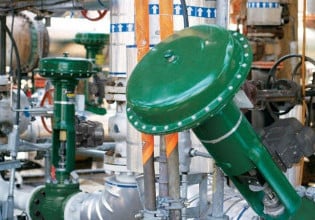Emerson Fortifies the SoCalGas Innovation Experience
Emerson announces a decision by Southern California Gas to use its automation solutions to deliver the [H2] Innovation Experience in Southern California.
The world is accelerating efforts to achieve a zero-emission future as the climate crisis worsens. Businesses and industries covering aviation, automotive, energy, manufacturing, and others are making strategic steps to promote growth in innovation and sustainable modes of operation in light of the Paris Agreement. One area seeing a welcome injection of green technology is the residential sector.
The [H2} Innovation Experience home-of-the-future concept. Image used courtesy of SoCalGas
Technology giant Emerson Electric Co. has announced a collaboration with Los Angeles-based utility company Southern California Gas (SoCalGas). The latter company will use Emerson’s digital technologies, software, and services to demonstrate its first-of-a-kind [H2] innovation experience. The project essentially serves as an example of a small-scale microgrid that combines renewable-sourced power with utility-provided natural gas power to fuel a home more sustainably.
The [H2] Innovation Experience demonstrates what is possible for future residential home energy systems in Southern California and globally.
The [H2] Innovation Experience
The [H2] Innovation Experience features an almost 2,000-square-foot home with an integrated power storage battery bank, multiple solar panels (or a photovoltaic array), and an electrolyzer to convert solar energy into renewable, clean hydrogen.
An electrolyzer is a system that separates water into hydrogen and oxygen through the chemical process of electrolysis. The process uses electricity to break down water molecules to release hydrogen sustainably without emitting greenhouse gas (GHG) carbon dioxide (CO2) into the atmosphere. The hydrogen produced can be mixed with utility-provided natural gas power in a home water heater, stove, clothes dryer, heat pump, heating, ventilation, and air conditioning unit.
Video used courtesy of SoCalGas
The solar panels of the [H2] Innovation home capture solar energy for immediate use and can be used to charge a sizeable stationary battery and funnel power into an electrolyzer to create green hydrogen.
A Thermal Conductivity Gas Analyzer
Mixing natural gas with hydrogen requires a device known as an analyzer to determine the exact composition. The analyzer is used to verify the gas/hydrogen mixture. For the [H2] Innovation home, a system comprising an analyzer, pressure transmitters, flow meters, control valves, and an automated control system is used to monitor the flow of and determine the appropriate ratio/composition for natural gas/hydrogen.
The system is designed to adapt quickly to potentially sudden changes in load.
Balancing Energy Supply and Demand
Emerson and its Impact Partner, Caltrol Inc., worked together to provide a way of controlling and monitoring precise gas concentrations and gas flow through control hardware, software, and instrumentation.
Using an electrolyzer and a blending station for the combination of natural gas and hydrogen requires flow control over a high turndown range. This enables the balancing of energy consumption.
Hydrogen may not be required depending on the number of natural gas-consuming applications running at any given time in a home. This is where the natural gas pressure and feed flow need to be monitored so that the appropriate concentration of hydrogen can be added via the blending system.
Emerson and Caltrol designed a control system to help balance the supply and demand for energy in the [H2] Innovation home. The system can also feed back energy into the local grid when needed, either as blended hydrogen/natural gas or electricity (with zero emissions).
Along with the company’s expertise in hydrogen, Emerson also provided SoCalGas with safety instrumented systems, electronic marshaling technology, process control systems, field control elements, instrumentation, and analytics solutions. These technologies complement each other to provide safety and help achieve the utility’s environmental, social, and governance (ESG) goals.


![The [H2] Innovation Experience home-of-the-future concept.](https://eepower.com/uploads/articles/image1_17.png)




